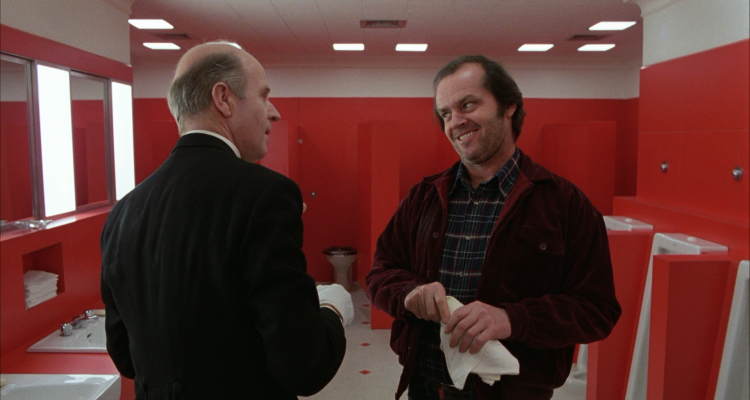Stanley Kubrick’s masterful “The Shining” is a hypnotic, deliriously unnerving film that gets under your skin, refusing to let you think for a minute that you’ll be safe from its spell. It’s one that frightens YouTube editor Lessons from the Screenplay, a.k.a. Michael Tucker, like no other. It disturbs him, makes him look over his shoulder and believe there’s suddenly someone there in the room with him. It wields a power few films hold, horror or otherwise, especially for its time. But how is that so? Well, at least partially, it came from its approach to the screenplay, as Kubrick and co-writer Diane Johnson took Stephen King’s bestselling novel and turned it into one of the most unconventional, haunting and influential films of all-time.
Now, granted, there are a few caveats when it comes to studying Kubrick’s films from a script perspective. For one, Tucker could only study the post-production screenplay, which is essentially just a transcript made after filming, because the shooting script is quite nearly impossible to find. That’s because Kubrick was constantly re-writing and re-writing and re-writing “The Shining” day after day after day during the shoot. Also, the notoriously reclusive director didn’t like to have his screenplays made public, once saying, “A screenplay isn’t meant to be read, it’s meant to be realized on film.” Regardless, the script and the design of the film are one in the same, and luckily there’s a lot of documentation on the writing process.
According to Johnson, “Stanley’s approach was to think in terms of time segments in relation to the totality of the film.” There are ten segments in the final product, each marked with a title card. At first, they refer to the subject of the segment, like “The Interview” or “Closing Day.” As the film moves forward, however, the time intervals decrease, from “A Month Later” to days of the week, to specific times on the final day at the Overlook Hotel. The increasing passing of time builds suspense for the audience, bringing them closer to the inevitable horror. And that’s accomplished through compelling foreshadowing, intricate plotting, strong character motivation and rich production designs, and more. Put more precisely, however, Johnson describes the approach to the script like this: “It must be plausible, use no cheap tricks, have no holes in the plot, no failures of motivation… and it must be completely scary.”
And that’s what makes “The Shining” so creepy, the very thing that scares Tucker the most. Often, both the film and the Overlook Hotel inside it present implied danger with no obvious threat. That puts the viewer at complete unease, but for reasons they often can’t discern — at least at first. In fact, for our video editor, “The Shining” become less scary as it goes along, because the threat becomes less vague and intentions of the hotel become more evident. It’s more suspenseful than creepy. But Kubrick’s film is such a triumph because it taps into the most terrifying place of all: our own imagination. Through theirs, Kubrick and Johnson made quite possibly the most frightening horror film of them all.

